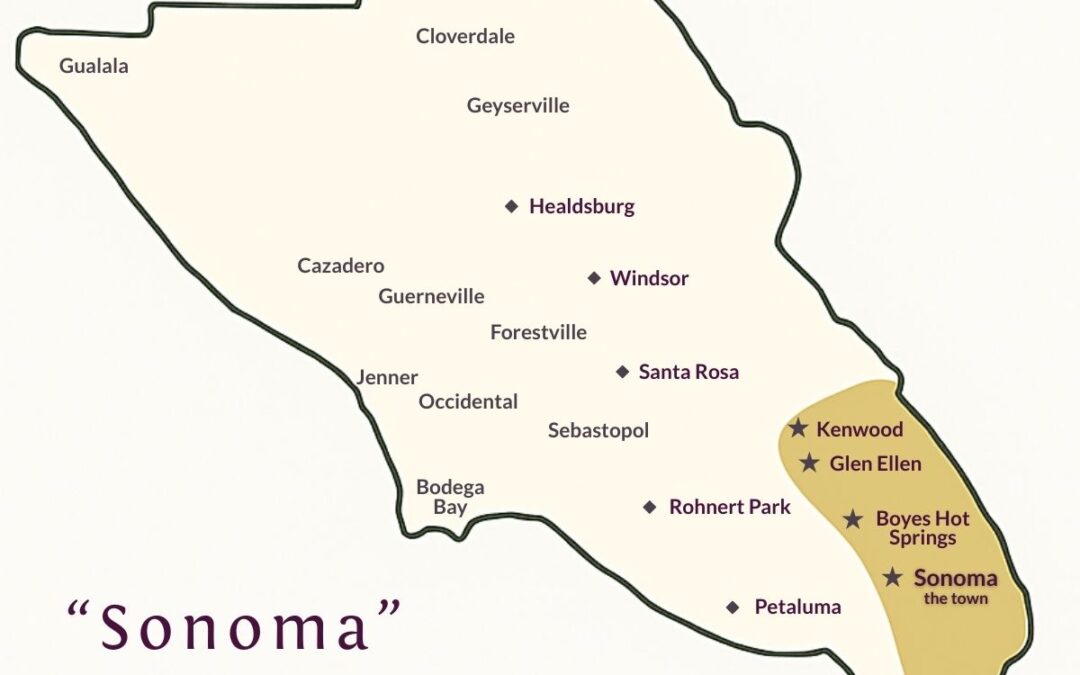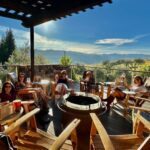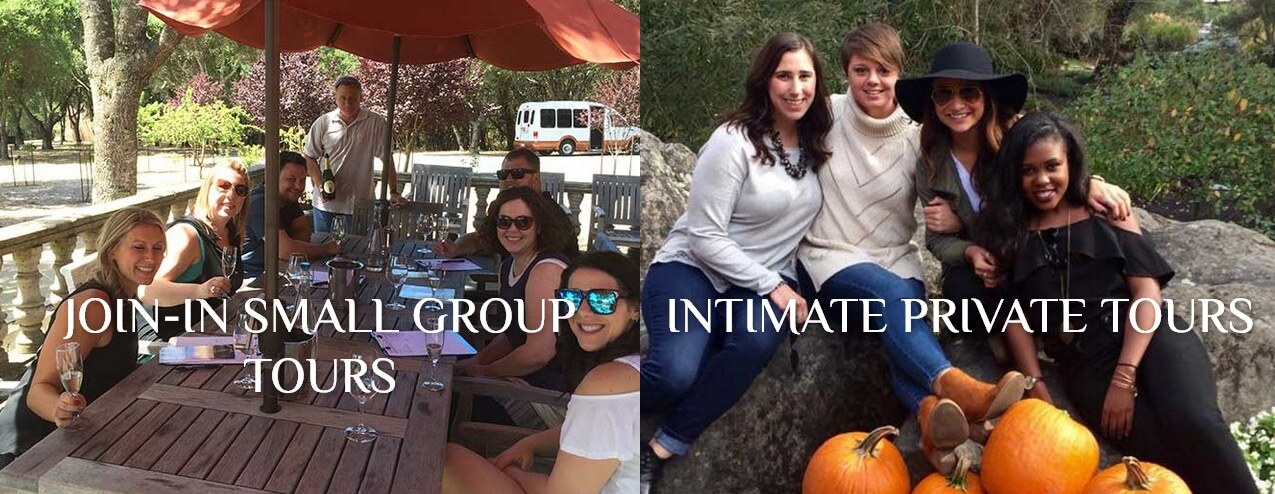When you say “Sonoma” to a local, we assume you mean the town of Sonoma. Like NYC—when someone says “New York,” they usually mean the city, not the state or the county. So if a wine country local asks, “Sonoma-Sonoma?” with a curious, cocked head, it’s because they’re wondering if you know the difference between the town, the valley, and the county.
The Town of Sonoma
Sonoma marks the end of the Mission Trail and is home to the 21st and final California mission—Mission San Francisco Solano, founded in 1823. It’s where the Bear Flag Revolt took place, the auspicious 1846 uprising that declared the short-lived California Republic. It’s also where Count Agoston Haraszthy, often called the “Father of California Viticulture,” planted some of the first commercial wine grapes in the state. Legend has it he met his end in Central America, possibly in the jaws of a crocodile or alligator, though the exact circumstances remain a mystery. The pioneers and land that summoned them helped create the Sonoma that exists today.
Two of my favorite pioneers were Martin and Dorothea Nathanson who arrived during the gold rush with little more than hope, disowned from Martin’s European family after marrying as teenagers. They endured a nine-month voyage around Cape Horn—where their infant daughter died. Dorothea wrapped her in her wedding veil before committing her to the sea. She went on to have seven children and they opened a grocery store next to General Vallejo’s barracks. Their perseverance and hope still flows quietly through town, like the creek which bears their name.
To visitors, it’s a laid-back, charming town where you’ll find world-class wine, restaurants, and spas. But to those of us who live here, it’s our bucolic hamlet, where everyone’s separated by one degree and life revolves around our 8-acre Plaza. It’s a place where we acknowledge the layered history and honor the people whose stories came long before ours.
Sonoma Valley
Framed by the Mayacamas Mountains to the east and Sonoma Mountain to the west, Sonoma Valley is a place where late-afternoon light turns the hills gold and the air carries the scent of bay laurel and warm grass. Writers, dreamers, and visionaries have been pulled here for centuries—some never left.
Jack London settled in Glen Ellen in the early 1900s, describing it as the most beautiful land in California, cherished for its wild and rural character. He spent his final years here building his Beauty Ranch and writing with the mountains at his shoulder—alongside Charmian London, a gifted writer and editor herself, who matched his restless energy with practical grace.
The valley also drew Adolph Spreckels, whose reach extended far beyond his sugar empire. With his wife, Alma, they poured vision and resources into creating spaces that celebrated, rather than overshadowed, the land’s natural beauty as well as the performing arts.
Today, its small towns—Kenwood, Glen Ellen, Boyes Hot Springs, and Sonoma—are linked by tree-lined roads, vineyard views, and stories. To live here is to know the silhouette of the hills in every season, and to walk the same oaks, creeks, and fields that once inspired some of California’s most notable trailblazers.
Sonoma County
Sonoma County holds the town of Sonoma and the valley that surrounds it, but it also opens into so much more. In the inland areas, gnarly, 100+ year-old Zinfandel vines grow beside apple orchards, olive groves, and small farms that still have stands that run on the honor system. Every town carries its own personality and charm—Petaluma is more than its Butter and Eggs Parade. It’s an artisan town, rich with culture and historic architecture, along with antique stores that showcase its unique and tangible history. Sebastopol carries its own artsy energy with live music drifting from coffeehouses and street corners. Healdsburg gathers around its lively plaza with a strolling-pace and gracious appeal.
Follow the Russian River and you slip beneath redwood canopies into Guerneville, a riverside town with a warm and inclusive community. Just up the road, Armstrong Redwoods feels like stepping into another time. The forest is still and cathedral-like, rivaling that of the famed Muir Woods.
Keep going west and the forest opens to the Pacific. The coast runs from the fishing and whale-watching boats of Bodega Bay to the windswept cliffs at Sea Ranch, where locals still talk about the ghost ship—seen in the fog one moment, gone the next—as if the ocean keeps some memories to itself.
In Santa Rosa, Charles M. Schulz found in Sonoma County the humor and soul of the Peanuts gang. That’s how it works here—the land inspires the people, and the people give that love back. It shows in the way farmers tend the same soil for generations, artists imagine without boundaries, and neighbors protect the coast and forests they grew up exploring. Sonoma County and its people carry each other’s stories forward, shaping a place—and a community—that endures.
P.S. From a Local
Sonoma County’s size and diversity is part of its charm—but getting around takes a little planning. At over 1,500 square miles, Sonoma County can take nearly two hours to cross by car. Public transportation is limited in most parts of the county, and cell service can be spotty in rural areas, so rideshares aren’t always a reliable option. If you’re staying in one place, choose your town based on what you want most from your trip—whether that’s wine tasting, coastal hikes, redwood walks, or a lively arts scene. And if you want to explore multiple corners of the county, consider renting a car or booking a tour. Mostly, come and find YOUR Sonoma.
Book a Platypus Small Group Wine Tour and take home a lifetime memory.

Platypus Tours Marketing Teammate
Platypus Tours, Guide Alumni






